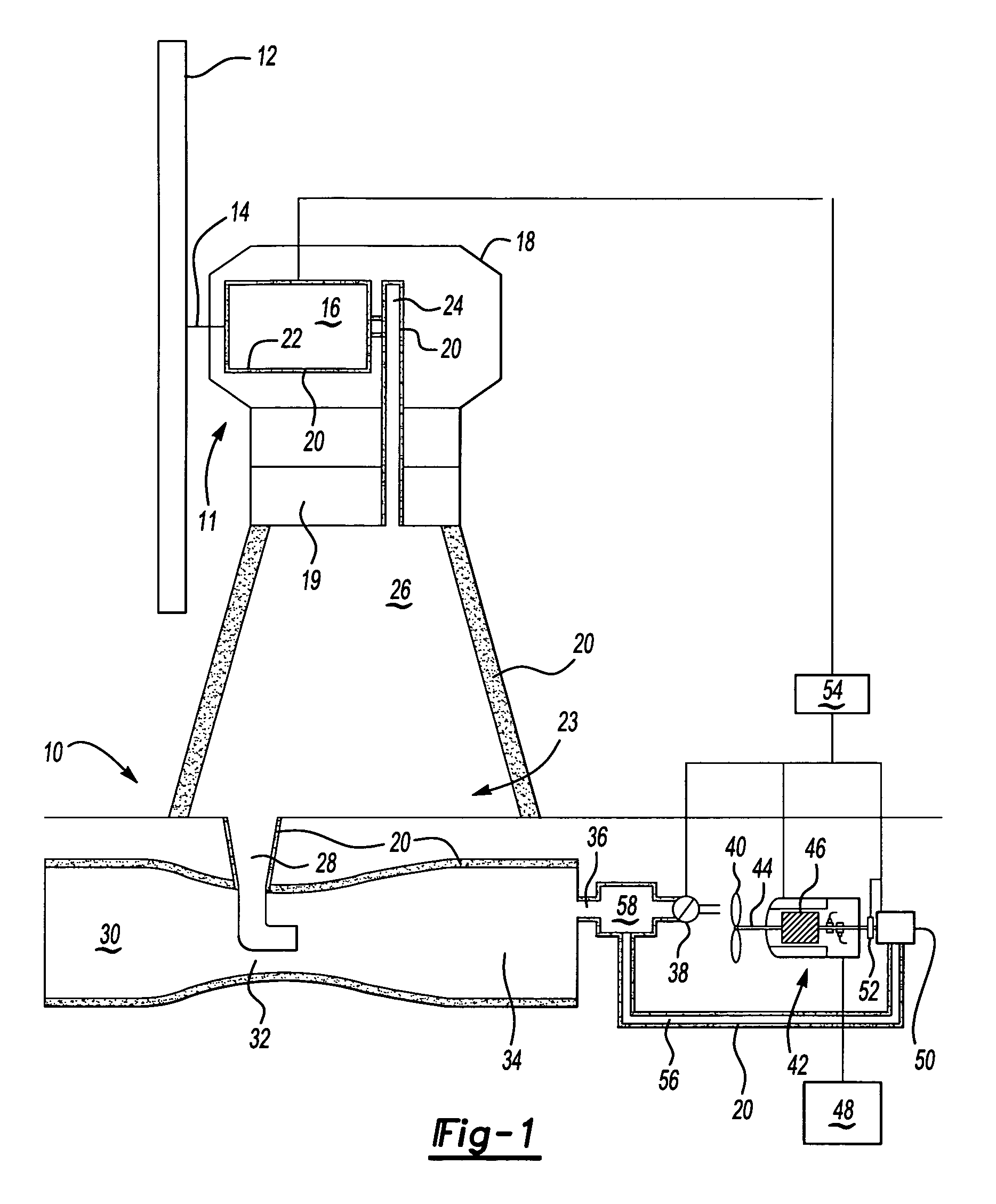Wind power system for energy production
a wind power system and energy production technology, applied in the direction of electric generator control, machine/engine, greenhouse gas reduction, etc., can solve the problems of wind speed variation leading to spikes in the amount of electricity generated by the generator, difficulty in selling wind generated power in the energy market, and many drawbacks of conventional wind power systems in regard to electricity generation. , to achieve the effect of low variation in the amount of electricity generated and high operational efficiency
- Summary
- Abstract
- Description
- Claims
- Application Information
AI Technical Summary
Benefits of technology
Problems solved by technology
Method used
Image
Examples
Embodiment Construction
[0029]FIG. 1 illustrates a schematic view of a wind power energy system 10. The wind power energy system 10 includes a wind tower 11 with a wind turbine 12 connected to a power distributor 14. The power distributor 14 supports the wind turbine 12 and transmits power from the wind turbine 12, in response to wind, to a compression system 16 that produces pressurized air with a first temperature. The pressurized air has potential energy, including a pressure component and a temperature component. Loss of pressure and / or loss of temperature (heat) reduces the total amount of potential energy stored in the pressurized air. It is to be understood that the wind power energy system 10 typically includes multiple wind towers 11 to produce pressurized air.
[0030]A nacelle 18 houses the compression system 16. Both the compression system 16 and nacelle 18 are disposed on a yaw orientation system 19. The yaw orientation system 19 allows the nacelle 18 and wind turbine 12 to be oriented in the mos...
PUM
 Login to View More
Login to View More Abstract
Description
Claims
Application Information
 Login to View More
Login to View More - R&D
- Intellectual Property
- Life Sciences
- Materials
- Tech Scout
- Unparalleled Data Quality
- Higher Quality Content
- 60% Fewer Hallucinations
Browse by: Latest US Patents, China's latest patents, Technical Efficacy Thesaurus, Application Domain, Technology Topic, Popular Technical Reports.
© 2025 PatSnap. All rights reserved.Legal|Privacy policy|Modern Slavery Act Transparency Statement|Sitemap|About US| Contact US: help@patsnap.com



